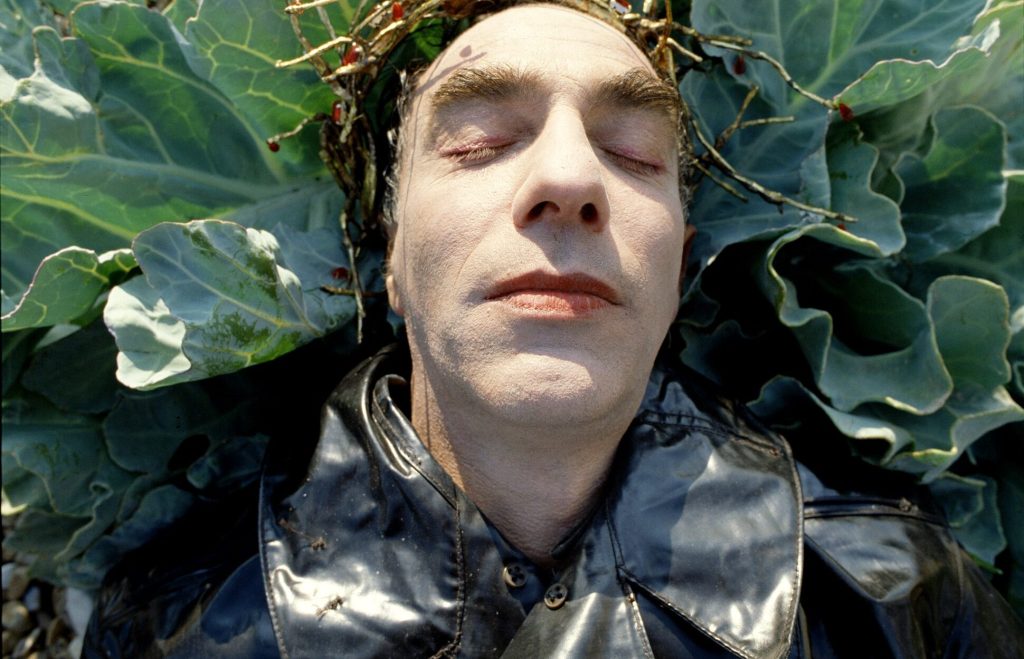John Daly-Peoples

Derek Jarman: Delphinium Days
Gus Fisher Gallery, 15 June-14 September 2024
City Gallery Wellington, 19 October 2024- 2 February 2025
John Daly-Peoples
This June, Auckland’s Gus Fisher Gallery opens Derek Jarman: Delphinium Days, New Zealand’s first exhibition of this highly significant figure influential artists and gay rights activists of his generation. Entry is free.
He was the first public figure in the UK to make his HIV positive status known, the exhibition marks 30 years since his untimely death to an AIDS related illness at the age of 52.
The exhibition curated by Lisa Beauchamp, ( Gus Fisher Gallery), Aaron Lister (City Gallery , and Michael Lett will feature seen paintings, films, photographs and archival material by and about the artist, which will offer an in-depth and affecting view of this celebrated cultural figure whose impact remains profound today.
Beauchamp says “The exhibition will also cement Jarman’s familial connection to Aotearoa through his father Lancelot,” she says.
Jarman’s father Lancelot Elworthy Jarman was born in Canterbury in 1907 after Jarman’s grandparents immigrated from Britain in 1888.
“To bring this part of his life to the fore in Derek Jarman: Delphinium Days will add so much to our understanding and connection to him as one of the most enduringly relevant and impactful artists of modern times,” adds Beauchamp.
Jarman was a prolific creative best known for his avant-garde films, who pushed boundaries to move skilfully between painting, film, writing, set design, performance and gardening.
Jarman was an early campaigner for the rights of the LGBTQIA+ community and people with AIDs, after being diagnosed as HIV positive himself in 1986.
Co-curator Michael Lett says: “Derek Jarman was one of my first encounters with a fully formed, human gay man. As a teenager reading “Modern Nature” quietly in my room, I found a complex man, who had friends, had sex, got angry, liked to garden and was open about being HIV positive.”
Jarman’s films are widely known, including Caravaggio (1986) and The Garden (1990) starring his longtime collaborator and muse Tilda Swinton; cult-favourite Jubilee (1978) and his last ever feature film Blue (1993). In Auckland, Gus Fisher Gallery will partner with The Capitol Cinemas to present a selection of Jarman’s most well-loved feature films by the artist.
Jarman helped set the cultural zeitgeist for the time, with his art speaking to and for the dispossessed and alienated, as well as his writing, including Modern Nature (1991) and At your own risk (1992). Many will also be familiar with his music videos for iconic bands like Pet Shop Boys, The Smiths, and Sex Pistols.
Major painted works from Jarman’s late ‘Evil Queen’ series will be included in the exhibition, as well as a selection of his famous tar paintings and landscapes that connect to his garden at Dungeness. A selection of Jarman’s rarely seen Super 8 films will also be featured.
The artist himself will feature in a range of tender images by Jarman’s close friend and photographer Howard Sooley.
A dynamic public programme of events will be delivered in Auckland and Wellington to help the exhibition resonate with broad audiences, informed by kōrero with Aotearoa’s LGBTQIA+ communities.
“By using the exhibition as a catalyst to reduce the stigma associated with HIV and AIDS, we plan to offer meaningful engagement opportunities for rainbow audiences and allies,” says Beauchamp.
She says Jarman became a beacon of hope for those isolated from society.
“His artworks and social commentary are a powerful mechanism against a rising tide of hatred and homophobia. Whether through painting, film, gardening or writing, his creativity knew no bounds and continues to influence generations of artists globally.”
